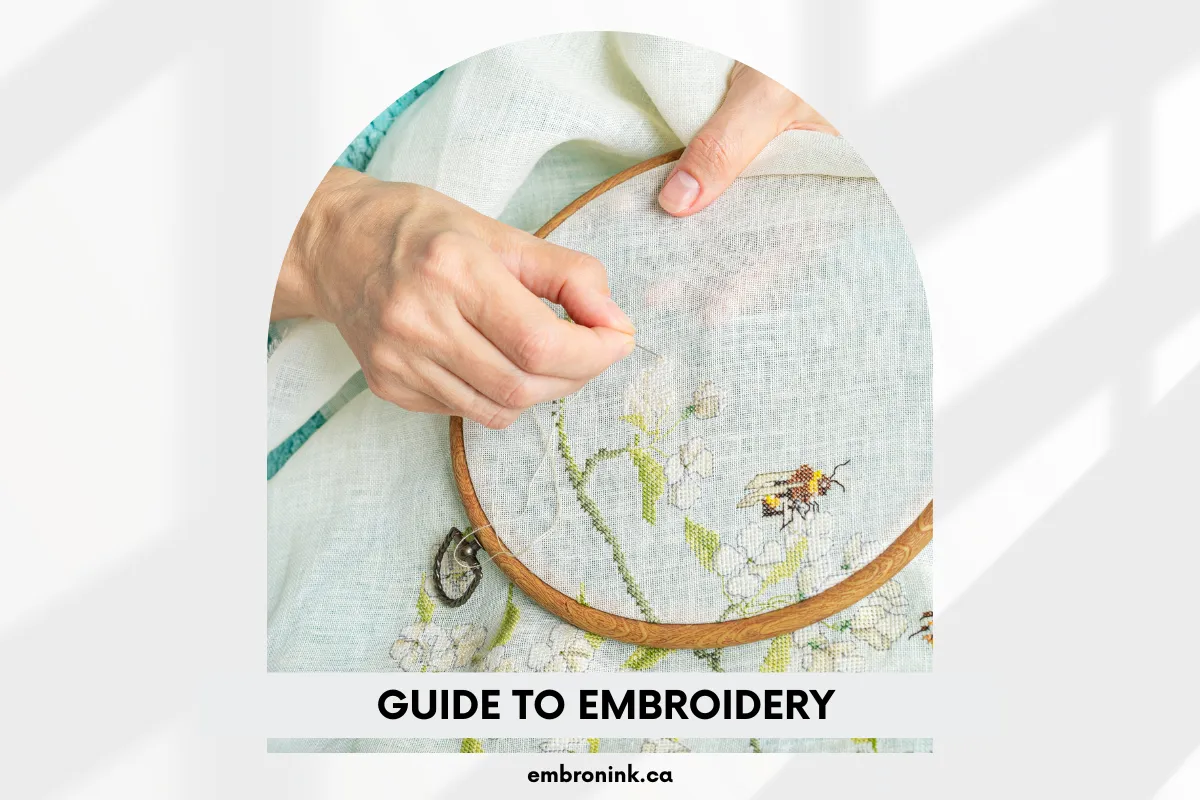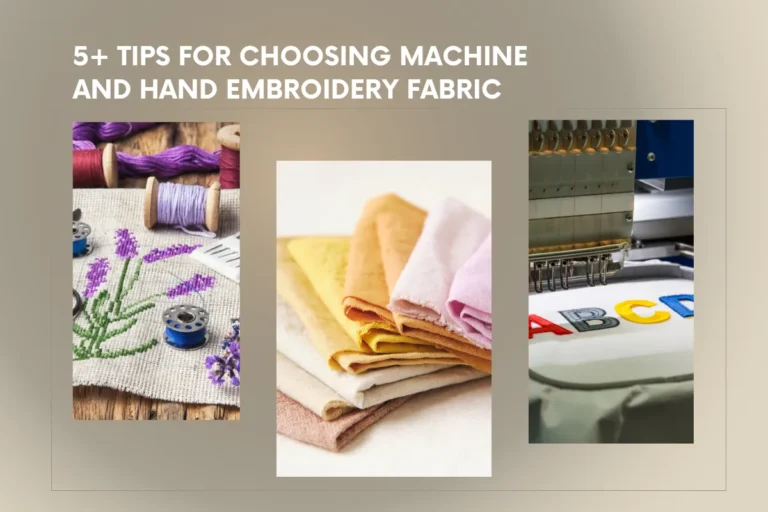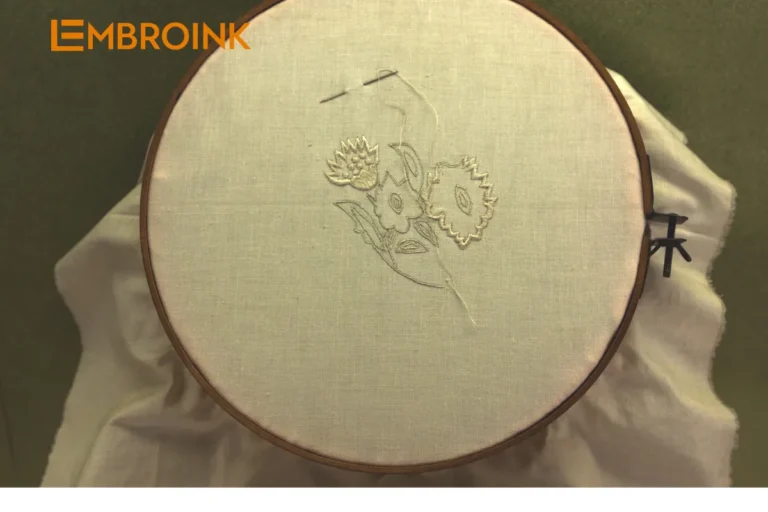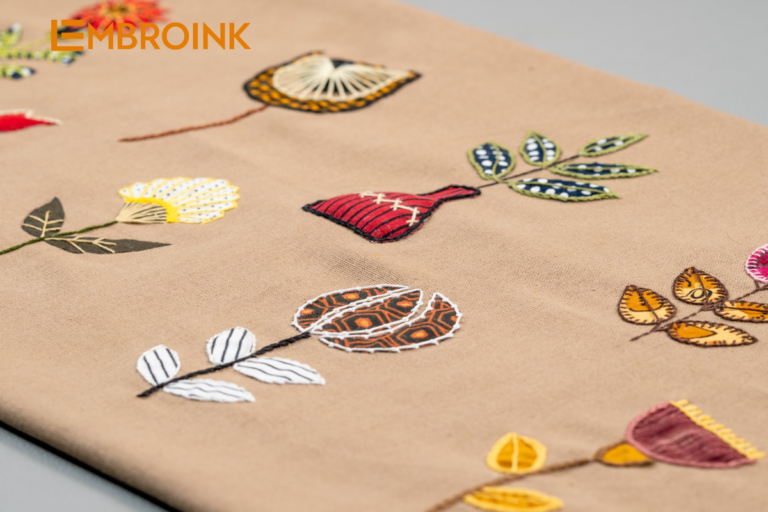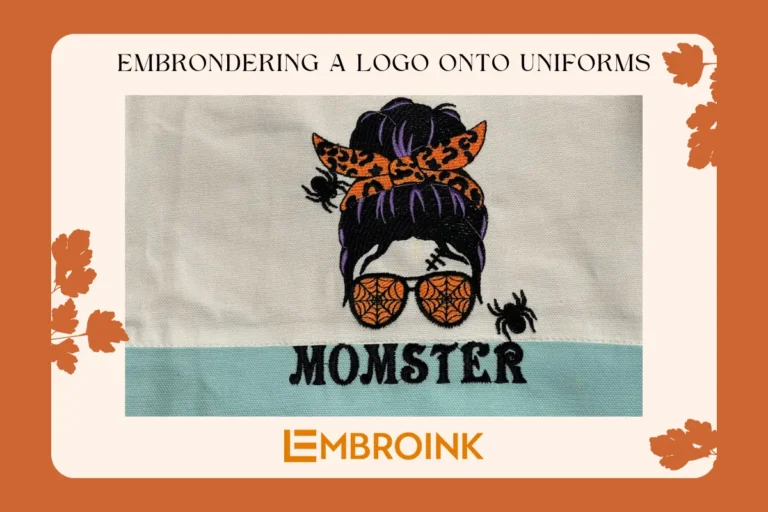Ultimate guide to embroidery: The origins and evolution
For millennia, crafters have continuously found ways to turn everyday objects into works of art. Among the myriad decorative art forms, none has resonated quite as strongly as embroidery. The story of embroidery is, in many ways, the story of the world. This timeless craft has existed in every population across the globe, whether displayed on clothing, home goods, or as standalone artwork.
Embroidery has become a beloved craft, deeply woven into our material culture and prevalent in diverse cultures worldwide. Today, many contemporary creatives continue to practice this age-old art, making it a popular choice for both experienced crafters and aspiring artisans. If you’re interested in mastering this ancient handcraft, our ultimate guide to embroidery provides all the information and resources you need to become an expert—starting with the most basic question: what is embroidery and Ultimate guide to embroidery: The origins and evolution?
What is embroidery?
You might already be familiar with embroidery, even if you hadn’t realized it. Simply put, embroidery is the art of applying decorative designs onto fabric using a needle. These designs, traditionally rendered in thread, are composed of various stitches.
Embellishments like beads, sequins, and pearls can also be incorporated, adding texture and sparkle to the motifs. The designs are often circular, thanks to special hoops used to keep the fabric taut during the process. However, some artists take embroidery beyond the hoop, creating intricate designs on unexpected surfaces such as metal or even tennis rackets.
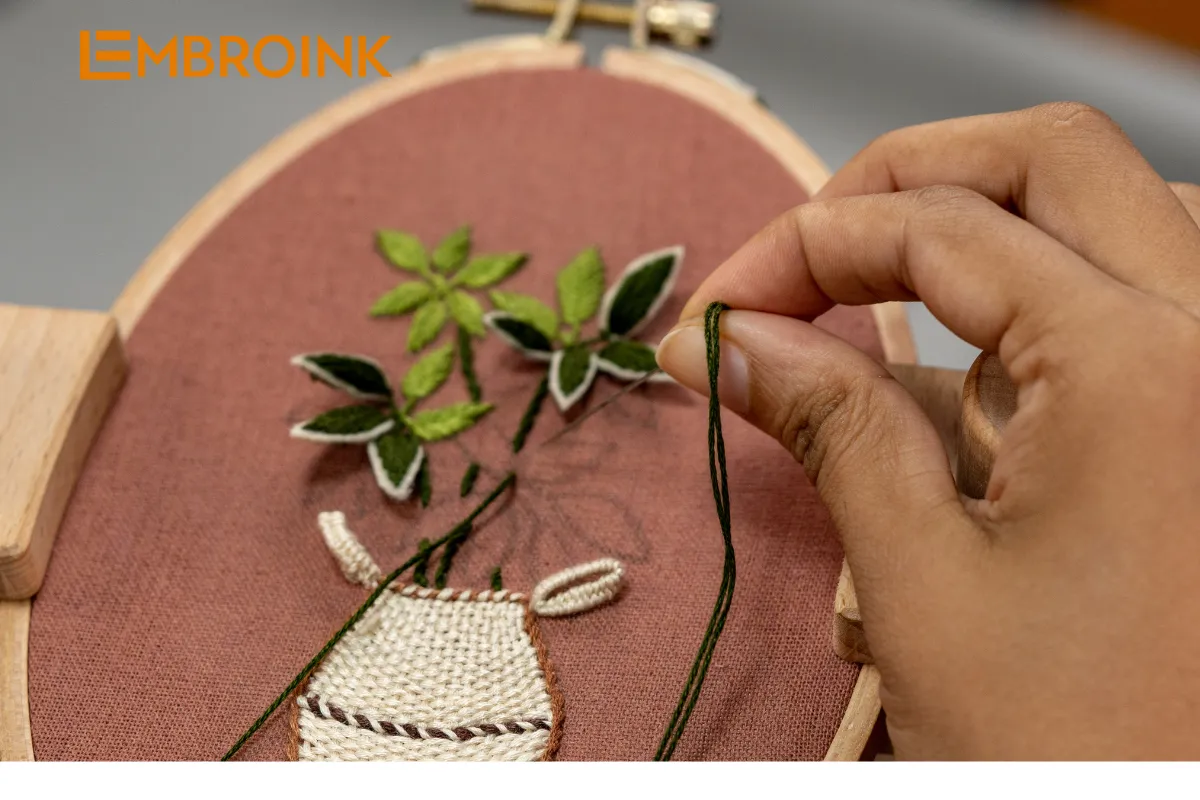
History of embroidery
Embroidery has been around forever—and that’s not an exaggeration. The Greek goddess Athena is credited with passing down the art of embroidery, in addition to weaving. With such a high-and-mighty figure associated with embroidery, it’s no surprise that the practice was historically linked to wealth and high society. In medieval England, for instance, professional workshops and guilds produced fine silk garments for the elite. However, embroidery was not solely reserved for the upper crust; there were folk art movements in Eastern Europe, the UK, East Asia, and South America that catered to nonprofessionals.
Much like the aesthetic capabilities of the craft itself, the history of embroidery is varied. Initially, it had a practical purpose of repairing clothing. Since garments were expensive to produce, clothing was rarely discarded and was instead mended. Over time, this practicality evolved into a form of decorative expression. Here, we trace its evolution by exploring the many cultures that have shaped it.
Cro-Magnon Russia
The practice of embroidering textiles can be traced back as far as 30,000 BCE. In 1964, archaeologists excavated the fossilized remains of a hunter clad in embroidered garments in Sungir, a late Paleolithic burial site in Russia. The huntsman’s fur clothing and boots were decorated with hand-stitched rows of ivory beads, serving as the oldest known evidence of the craft.
18th Dynasty Egypt
By the 14th century BCE, embroidery was prominent in ancient Egypt. The most well-known examples from this period are King Tutankhamun’s hand-stitched treasures. Buried with the pharaoh, these pieces include ceremonial tunics, a decorative leopard skin, and a well-preserved floral collar featuring rows of flower petals, blossoms, leaves, berries, and blue faience beads sewn to a papyrus backing.
China in the Warring States Period
In 4th-century BCE China, embroidered textiles were discovered in tombs. The oldest examples from this period were found in a burial chamber in Mashan, located in the Hubei province. These early Chinese embroideries showcase the intricate and enduring nature of this ancient art form.
Described as “a treasure house of silk,” the site housed well-preserved ritual garments adorned with colorful stitched patterns and mythical motifs like dragons and phoenixes.
Japan During the Kofun Period
In the 7th century, embroidery emerged in Japan. Adopted from its Chinese equivalent, nihon shishu (Japanese embroidery) was initially used exclusively for religious depictions, particularly to portray Buddha. However, from the 14th century onward, embroidery techniques were used to decorate everyday textiles, including traditional Bugaku dance costumes and other secular garments.

Medieval normandy
Crafted in the 11th century and famous for its scale and craftsmanship, the Bayeux Tapestry is arguably the most renowned work of embroidered art in the world. Featuring wool yarn on a linen backdrop, the 230-foot-long textile vividly details the Battle of Hastings in 1066 and the Normans’ subsequent conquest of England. Today, the piece is housed in the Musée de la Tapisserie de Bayeux in Bayeux, Normandy, France.
India in the mughal period
In the 16th century, embroidery flourished in India. Ari, or “hook,” needlework became particularly popular due to its delicate aesthetic favored by Mughal royalty. Initially used to embellish leather, this style of embroidery was eventually adapted for wall hangings and garments, including saris. By the 18th century, ari work was “identified as among the most lucrative goods for export,” as the hook-stitch style (known in Europe as “tambour stitching”) gained popularity in Britain and France.
Industrialized France
The Industrial Revolution of the late 18th and early 19th centuries transformed embroidery. Automation brought on by machines allowed textiles, including embroidery, to be produced en masse. In the mid-1800s, France led the way for a future of machine-made embroidery. This innovation made the technique cheaper and easier to produce, significantly lowering production costs and making embroidery accessible to the masses.
How is embroidery used today?
Embroidery has experienced a resurgence over the past decade. Some, like author Rozsika Parker in her book The Subversive Stitch, attribute this boost to the Great Recession of the late 2000s. The economic downturn fueled a desire to return to handmade items, as DIYing became a popular trend. This trend continues today, with people embracing the practicality of embroidering for decoration and personal expression.
Beyond its practical uses, embroidery has evolved into a highly collectible art form. Individual artists create unique, intricate works that are cherished and proudly displayed in homes. This revival has cemented embroidery as both a timeless craft and a contemporary art form.

Different types of embroidery
While machine-driven embroidery methods are becoming increasingly popular, hand embroidery continues to offer a world of creative possibilities. With various combinations of stitches, fabrics, and threads, each hand-embroidered project possesses its own unique charm and reflects personal style.
With so many hand embroidery styles available, it can be confusing to differentiate between them. Don’t worry—we’re here to explain how each technique is distinct.
Here are several popular techniques:
- Cross-Stitch: This style uses X-shaped stitches to create patterns and images on fabric, often forming a grid-like pattern.
- Crewel Embroidery: This technique uses wool thread on a linen or cotton base to create textured, often floral, designs.
- Blackwork Embroidery: Characterized by intricate black thread patterns on a white or light-colored background, this style often features geometric or floral designs.
- Stumpwork Embroidery: This three-dimensional technique uses padding and raised stitches to create textured and lifelike images.
- Needle/Thread Painting: Also known as silk shading, this technique uses long and short stitches in various colors to create detailed, realistic images that resemble paintings.
- Surface/Freestyle Embroidery: This versatile style allows for creative freedom, using various stitches and threads to create unique designs on the fabric surface.
Cross-Stitch
If you’re just starting with embroidery, cross-stitching is an easy style to master thanks to its simple X-shaped stitches. One of the oldest embroidery techniques, cross-stitch designs are typically applied to woven, grid-patterned fabrics like Aida cloth, Jobelan, and jute-style linen, which help ensure even stitches. You can count the threads in each direction for uniform stitch size, resulting in designs that often appear boxy and structured. This angular quality makes cross-stitch an excellent choice for embroidering words and phrases.
Crewel embroidery
Crewel embroidery, or crewelwork, is a type of surface embroidery that uses two wool threads simultaneously. This technique typically follows a design outline and can be rendered with a variety of stitches. With roots dating back to the Medieval period, one of the earliest examples is The Bayeux Tapestry from the 11th century, which details the historical Battle of Hastings in 1066.
During 17th-century England, crewel work was widely used to embellish Jacobean-style household textiles, such as curtains and bed covers. The strong wool (known as crewel wool) used for its stitches made it especially suitable for decorative upholstery.
Modern embroidery artists often draw inspiration from early crewel designs, incorporating a mix of fibers like wool blends and hand-spun yarns. Common surface stitches include stem, chain, and split stitches, as well as satin stitches and French knots. For a traditional look, using linen twill as your fabric is recommended.
Blackwork embroidery
Despite its name, blackwork embroidery is not limited to black thread! The style originated from its traditional use of black thread and gained popularity in England during King Henry VIII’s reign, thanks to his first wife, Catherine of Aragon, who brought blackwork clothing from Spain. This is why it is sometimes referred to as Spanish blackwork.
Blackwork employs a counted-thread technique, ideal for those seeking a classic look, allowing embroiderers to fill outlined motifs with intricate geometric patterns. Like cross-stitch, it can be done on various fabrics but works best on even-weave cloth for following a grid. Instead of cross-shaped stitches, blackwork primarily uses backstitch and Holbein stitch (also known as double running stitch).
Unlike other traditional surface embroidery styles that require sharp-tipped needles, blackwork is done with a tapestry needle, which has a blunt tip, making it easier to create backstitches and double-running stitches.
Stumpwork embroidery
Also known as raised embroidery, stumpwork originated in mid-1600s England. This technique elevates hand embroidery by building on basic stitches to create three-dimensional designs. Using fabric as a base, stumpwork artists layer stitches and add 3D embellishments such as beads, or stitch around shapes, wires, and padding to achieve a raised effect.
Nature is a popular subject for stumpwork artists. For example, the craftswoman known on Instagram as Stitch and Bone uses beads and thick fabrics to create intricate textile insects. Similarly, French artist En Avril turns her animal illustrations into incredible textured brooches.

Thread painting
Sometimes called needle painting, thread painting uses a combination of long and short stitches and various colors to create images that resemble textile paintings. Each stitch acts like a brushstroke, merging into the next to produce a seamless, detailed image. Depending on the fabric and thread used, thread painting can resemble an Impressionist painting or a photorealistic work of art.
Many contemporary artists have embraced this expressive approach. For instance, Cape Town-based artist Danielle Clough uses thick, vivid yarns to create detailed portraits. When asked what inspires her to “paint with thread,” she tells My Modern Met: “I found embroidery through a sequence of mistakes and opportunities. I almost stumbled upon it, initially doodling on a piece of felt with thread and slowly adding colors. This combined with photography developed into my technique, which to some is thread painting or freestyle embroidery. It’s even been called chicken scratch! I never had a moment that inspired me, but just a process of doing, loving, and making that grew into what it is today.”
Surface or freestyle embroidery
This style encompasses embroidery that doesn’t fall into a specific category. For contemporary stitchers, this is the most common approach—they aren’t limited to one style. Instead, they can mix and match different stitches, allowing for creative freedom and personal expression.
What do you need to start embroidering?
One of the great things about hand embroidery is that the initial supplies are minimal, allowing you to start the craft without a significant investment. Over time, you can expand your collection of tools and materials as you become more experienced and explore different techniques.
Many beginners start with embroidery kits, which typically provide everything you need to get started. However, if you prefer to start from scratch—whether you’re thread painting, counted cross-stitching, or doing needlepoint—you’ll want to stock up on the following essential embroidery supplies:
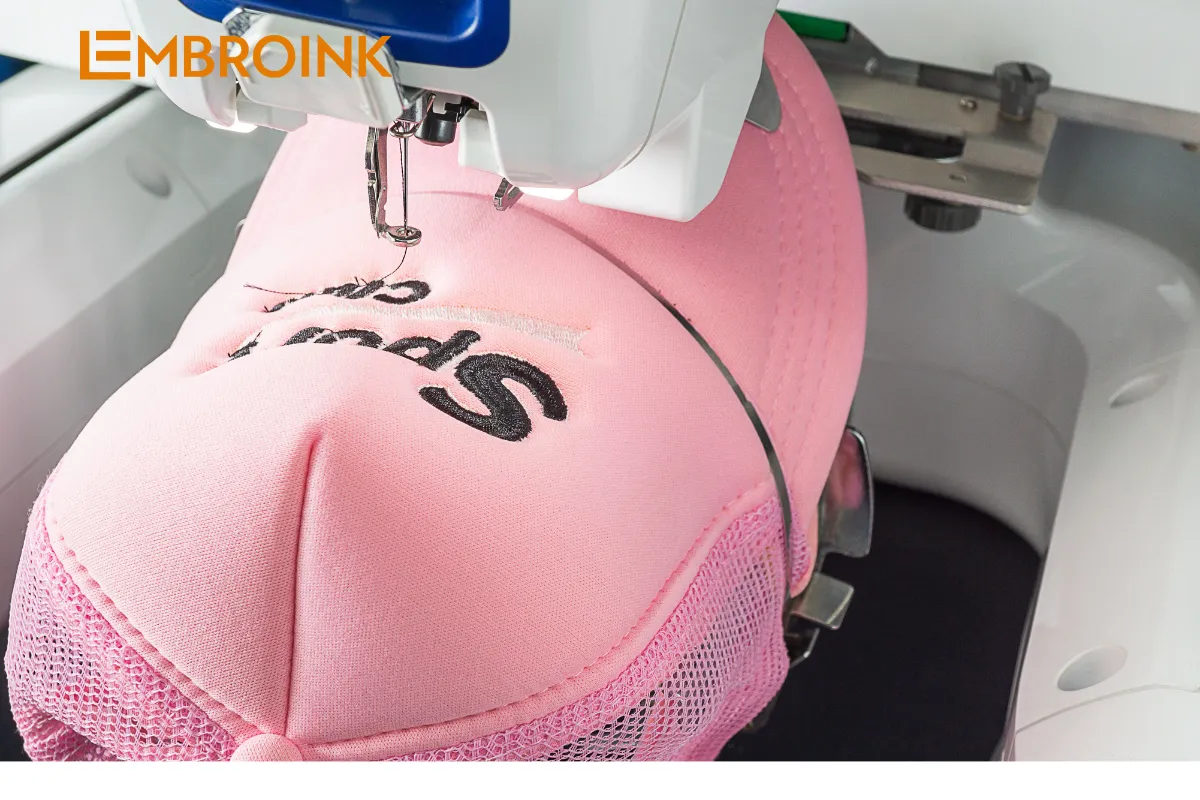
Basic supplies needed to start embroidering
Starting with the right supplies makes learning embroidery enjoyable and efficient. Here are the essentials:
Fabric
- Selection: Choose fabric based on the type of embroidery you’re doing. Fabrics with either loose or tight weaves are suitable for different techniques.
- Common Choices:
- Aida Fabric: Ideal for counted cross-stitch and needlework due to its loose, grid-like weave.
- Cotton: Works well for freehand techniques like thread painting and is inexpensive.
- Linen: Specialty shops offer linen specifically for embroidery.
- Silk: Popular for its smooth texture, best used with a sharp needle and short threads.
- Versatility: As you gain experience, you can experiment with various materials to embroider.
Thread
- Types: Embroidery threads come in different weights and colors.
- Stranded Cotton (Embroidery Floss): Sold in skeins, can be separated into six fine threads. DMC is a widely used brand with a vast color range and coded numbers.
- Other Threads: Pearl cotton, rayon floss, metallic thread, crewel yarn, Persian yarn, and silk thread.
- Consistency: For a uniform look, use the same type of thread by the same manufacturer throughout a single project, as finish and thickness may vary.
Needle
- Selection: Choose needles based on the weight of the thread and the fabric weave.
- Embroidery Needles (Crewel Needles): Often come in packs with various widths. They have a sharp point and a large eye for easy threading.
- Tapestry Needles: Blunt point needles used for needlepoint and cross-stitch.
Scissors
- Sharpness: A sharp pair of scissors is essential for cutting threads cleanly without fraying.
Hoop
- Function: Keeps fabric taut to prevent stretching or warping the final design.
- Types: Available in plastic and wood, in a range of sizes. Other options include clip frames and scroll frames.
- Care: Do not leave an unfinished project stretched in the hoop when not working on it to avoid leaving marks on the fabric.
Good lighting and magnification
- Importance: Essential for seeing the details of your work and accurately placing threads.
- Options: A good lighting source and magnification tool, or working by a sunny window, can be very helpful.
By starting with these basic supplies, you can dive into the world of embroidery and gradually build your toolkit as you explore and refine your skills.

Level up your embroidery supplies: Additional essentials
As you become more experienced with embroidery, you may want to enhance your toolkit with some additional supplies. Here are some useful items to consider:
Water-Soluble Marker:
- Purpose: Use this to draw designs on your fabric or mark starting points.
- Benefit: Easily washable, leaving no residue on your fabric.
Needle Minder:
- Purpose: This clever gadget attaches to your fabric with a magnet and holds your needle in place.
- Benefit: Prevents lost needles and keeps your workspace organized.
Thread Conditioner:
- Purpose: Helps you avoid tangles and protect your embroidery floss.
- Benefit: Makes threading smoother and more manageable.
Waste Canvas:
- Purpose: Useful for counted cross-stitch or any embroidery requiring a grid.
- Benefit: Allows you to place a grid on any type of fabric and easily remove it once stitching is complete.
Needle Threader:
- Purpose: Simplifies the process of threading needles.
- Benefit: Saves time and reduces frustration, especially with fine threads.
Fabric Stabilizer:
- Purpose: Helps keep delicate fabric taut and stable when adding many stitches and embellishments.
- Types:
- Tear-Away Stabilizer: Can be torn away once the embroidery is complete.
- Water-Soluble Stabilizer: Dissolves in water, leaving no trace behind.
- Benefit: Prevents warping or tearing of the fabric, ensuring a neat and professional finish.
Adding these items to your embroidery supplies can make your crafting process smoother and more enjoyable, allowing you to focus on creativity and precision.

Keeping your embroidery supplies neat and tidy
Once you get started with embroidery, staying organized will help you manage your projects more efficiently. Here are some essential supplies to keep your embroidery materials neat and orderly:
Floss bobbins or cards:
- Purpose: Wrap your extra floss around these once you’ve opened a skein and finished a project.
- Tip: Label each card with the color code of the skein for future reference.
- DIY Trick: Use clothespins to wrap your floss if you don’t want to invest in bobbins or cards.
Storage box:
- Purpose: Specialty boxes are designed to perfectly organize your threads and fit your floss cards.
- Benefit: Makes it easy to pick out what you need for your next project.
Floss organizers:
- Purpose: Keep all your floss tangle-free and accessible, especially for large projects with many colors.
- Benefit: Enhances efficiency and keeps your workspace tidy.
File folders:
- Purpose: Store printed patterns neatly for future use.
- Benefit: Ensures your patterns stay organized and in good condition.
Project pouch:
- Purpose: Keep all the threads you need for a current project in one pouch.
- Benefit: Allows you to easily pick up and go, making your project portable.
With these organizational supplies, you’ll be able to keep your embroidery materials in order, making your crafting experience more enjoyable and efficient. Now that you’re organized, you’re ready to start stitching away!

